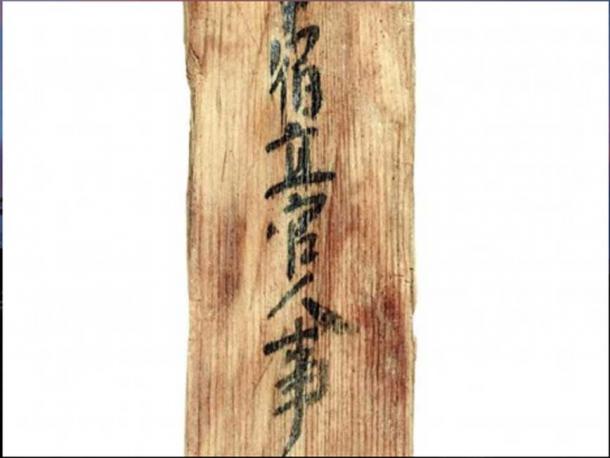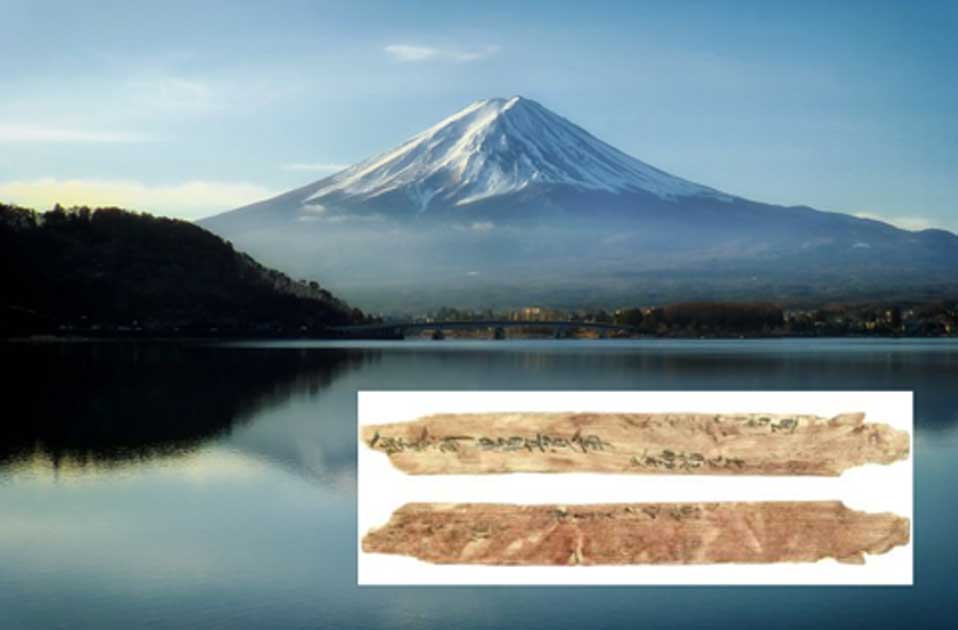Analysis of Wood Inscription Reveals Persians were in Japan 1,000 Years Ago
After centuries of belief that ancient Japan was relatively isolated from other parts of the world, researchers have discovered evidence of a Persian official working in the former capital Nara at least 1,000 years ago.
According to Science News Journal, a recently examined piece of wood brings new information about life in the ancient capital of Japan. It was unearthed in the 1960s, but the inscription was not easy to read. Due to modern methods of reading texts carved in ancient wood, the researchers were able to finally transcribe the inscription. The result overwhelmed everybody – the piece of wood confirmed a legendary story about the Persian people, who lived and worked in Japan during the 8 th century AD.
The research work led by Akirhiro Watanabe of the Nara National Research Institute for Cultural Properties, became a pivotal moment for understanding the history of the country. There has been emerging evidence that ancient Japan was more multicultural than previously believed. Watanabe suggested that the man whose life was noted on the piece of the wood, may have been knowledgeable in mathematics due to Persia's expertise in the subject at the time. As he said to Japan Times: ''Although earlier studies have suggested there were exchanges with Persia as early as the 7th century, this is the first time a person as far away as Persia was known to have worked in Japan. This suggests Nara was a cosmopolitan city where foreigners were treated equally.''
The Persian man referred to in the inscription was most probably a teacher, who was well educated, and may have embarked on the journey to Japan driven by curiosity and the search for work.

The piece of wood was discovered in the 1960s but as only now been fully analyzed. Credit: Nara National Research Institute for Cultural Properties
The city of Nara was an ancient capital between 710 and 784 AD. Until now, the common opinion about the history of Japan was that in this period they were isolated from most of the world. Ancient texts keep silent about many details relating to the daily life of society in that time. However, previous research had already suggested that the truth may be different. Currently, it is believed that Japan and Persia had been in touch since at least the 7 th century AD. Moreover, the new discovery suggests that the city of Nara was cosmopolitan and the people who lived there were treated equally.

Golden Hall of Tōshōdai-ji in Nara, Japan, Founded 759 AD (public domain)
Recently, other evidence emerged in relation to international contacts with ancient Japan.
Alicia McDermott from Ancient Origins reported in September 29, 2016:
''Four Roman copper coins have been unearthed at Katsuren Castle on Okinawa Island, Japan. They are the first of their kind to be discovered in the country and have been dated to 300-400 AD. How the coins came to be at the castle is still a mystery.
According to Seeker, it was first believed that the coins were simply pennies dropped by U.S. soldiers, but washing them showed images of the Roman Emperor Constantine I. Archaeologist Hiroki Miyagi said that the discovery came as a shock and the Independent claims that the coins “were originally thought to be a hoax.

Katsuren Castle, Uruma, Okinawa Prefecture, Japan. (kanegen/ CC BY 2.0 ) Insert: A 4th-century copper coin from ancient Rome found at the castle. ( Uruma Board of Education )
Japan Times reports that the coins measure 1.6-2 cm (0.6-0.8 inches) in diameter. The designs on the coins are hard to see due to abrasion, however by using x-ray analysis, the researchers found depictions of a soldier holding a spear and the emperor Constantine I. The coins will be on display at Uruma City Yonagusuku Historical Museum in central Okinawa until Nov. 25.
Apart from the Roman coins, the researchers also found a coin from the 17th century Ottoman Empire. Five other possible coins have also been discovered at the castle since excavations began there in 2013.''
The more archeologists unearth, the more surprising information they find. It seems to be possible that very soon most of the history books about the ancient history of Japan will have to be rewritten.
Top image: Main: Mount Fuji, Japan (public domain). Inset: A wood strip more than 1,000 years old that was excavated in Japan's former capital Nara names a Persian official living in the country.



















Comments
Recent discoveries are changing our view f how ancient cultures developed. For example, discoveries if Sanxingdui in Sichuan have radically changed our view of Late Bronze Age Chinese civilization, which no longer seems unitary.